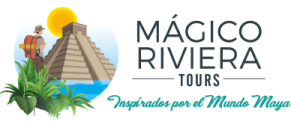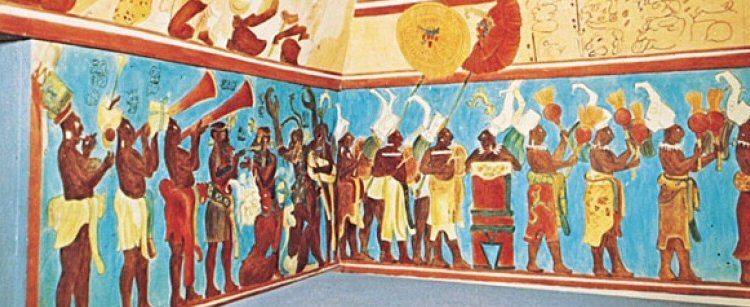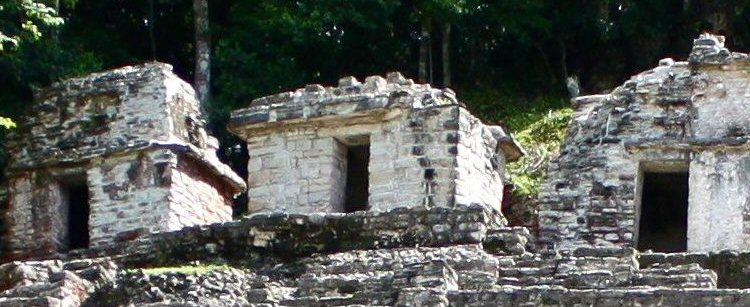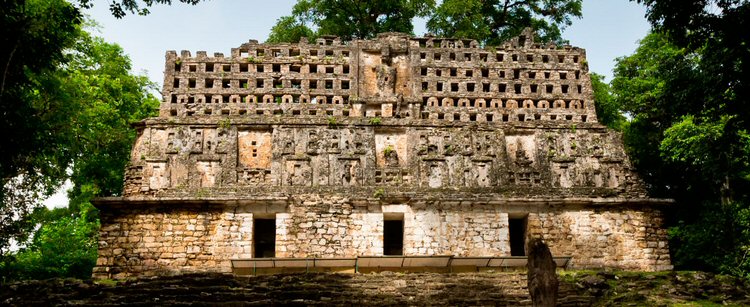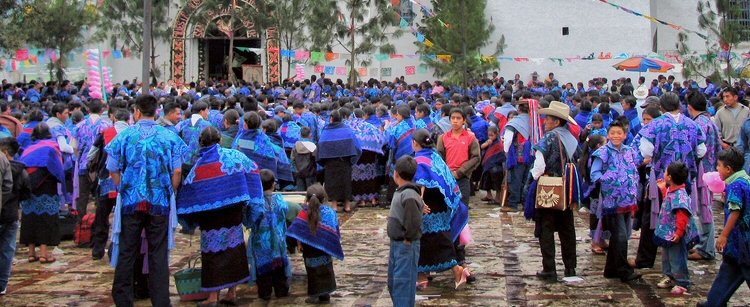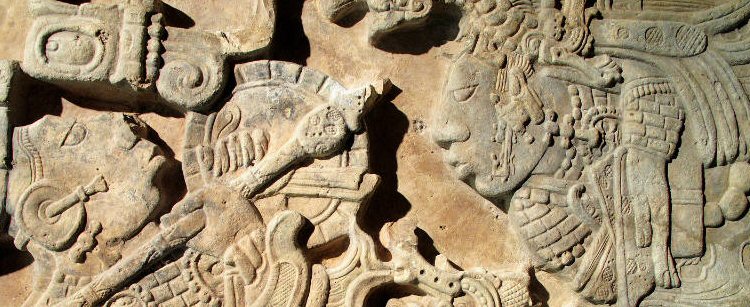Lacandon Jungle Expedition
The Lacandona rainforest was declared a natural monument on August 21, 1992 and comprises 4,357 hectares (17 square miles) inhabited by the Maya Lacandon people.
We provide tours with certified guides.
The jungle is also home to some of Mexico's most numerous and impressive archaeological sites, all of which belong to the Mayan civilization. The most important of these sites are Palenque, Bonampak and Yaxchilan, but there are many more sites and ruins that still lie unexcavated under the vegetation. Palenque lies on the edge of the Lacandon, where the Eastern Mountains meet the Gulf Coast Plains. It is not the largest Mayan archaeological site, but it has some well-preserved sculpture and architecture the culture produced. Major structures include the Temple of Inscriptions, the Temple of the Sun and the Temple of the Cross; however, only a small fraction of it has been excavated. Away from the ceremonial center and on the way to the site museum are smaller buildings around the Otolum stream with a small waterfall.
Yaxchilan flourished in the 8th and 9th centuries. The site contains extensive ruins, with palaces and temples bordering a large plaza upon a terrace above the Usumacinta River. The architectural remains extend across the higher terraces and the hills to the south of the river, overlooking both the river itself and the lowlands beyond. Yaxchilan is known for the large quantity of excellent sculpture at the site, such as the monolithic carved stelae and the narrative stone reliefs carved on lintels spanning the temple doorways. Over 120 inscriptions have been identified on the various monuments from the site. The major groups are the Central Acropolis, the West Acropolis and the South Acropolis. The South Acropolis occupies the highest part of the site. The site is aligned with relation to the Usumacinta River, at times causing unconventional orientation of the major structures, such as the two ballcourts. The site is relatively natural with howling monkeys, bats, toucans and other wildlife to be seen in and around the buildings.
The city of Bonampak features exceptionally well-preserved Maya murals, depicting Mayan clothing, rituals, games, food and other aspects of life from that time. The realistically rendered paintings depict human sacrifices, musicians and scenes of the royal court. The name means "painted murals". It is centered on a large plaza and has a stairway that leads to the Acropolis. There are also a number of notable Maya stelae.
Itinerary
DAY 1: Pick up at airport in Tuxtla Gutierrez. We arrive in Canon del Sumidero where we will ride by boat along the Grijalva River. Later we will stop at Chiapa de Corzo. Our destination for the day will be San Cristobal de las Casas before checking in to the hotel.
DAY 2: Breakfast at hotel. During the day we will visit the Waterfall el Chiflon, then the Montebello Lakes. We will stop at the Museum Parador Santa Maria and arrive to San Cristobal de las Casas.
DAY 3: Breakfast at the hotel before checking out. Then we head to San Juan Chamula and Zinacatan, two towns full of tradition. Then we’ll visit the Agua Azul and Misol Ha waterfalls before arriving at Palenque to check in at the hotel for the evening.
DAY 4: Leaving hotel very early in the morning. Breakfast in our way. We will get into Lacandona Jungle. First stop will be at Bonampak. After this visit, we go to Yaxchilan. To Access Yaxchilan it is necessary to take a boat for around 50 minutes. We return to Palenque.
DAY 5: Breakfast. Visit to archaeological site of Palenque. Return to Riviera Maya.
What does it include?
 Transportation with AC (in units for up to 12 passengers).
Transportation with AC (in units for up to 12 passengers).  Certified Guide.
Certified Guide. Entrance fees to archaeological site.
Entrance fees to archaeological site. Four nights at hotel with breakfast included.
Four nights at hotel with breakfast included. Lunch and dinner not included.
Lunch and dinner not included.
© 2018 All Rights Reserved
 +52 (984) 206 1311
+52 (984) 206 1311

